Did you know that you can make homemade vegetable broth from scraps? Let me show you how easy it is to make a vegan broth from veggies you would have otherwise just thrown away. This simple hack will save you money on groceries and make delicious flavorful soups and savory meals!
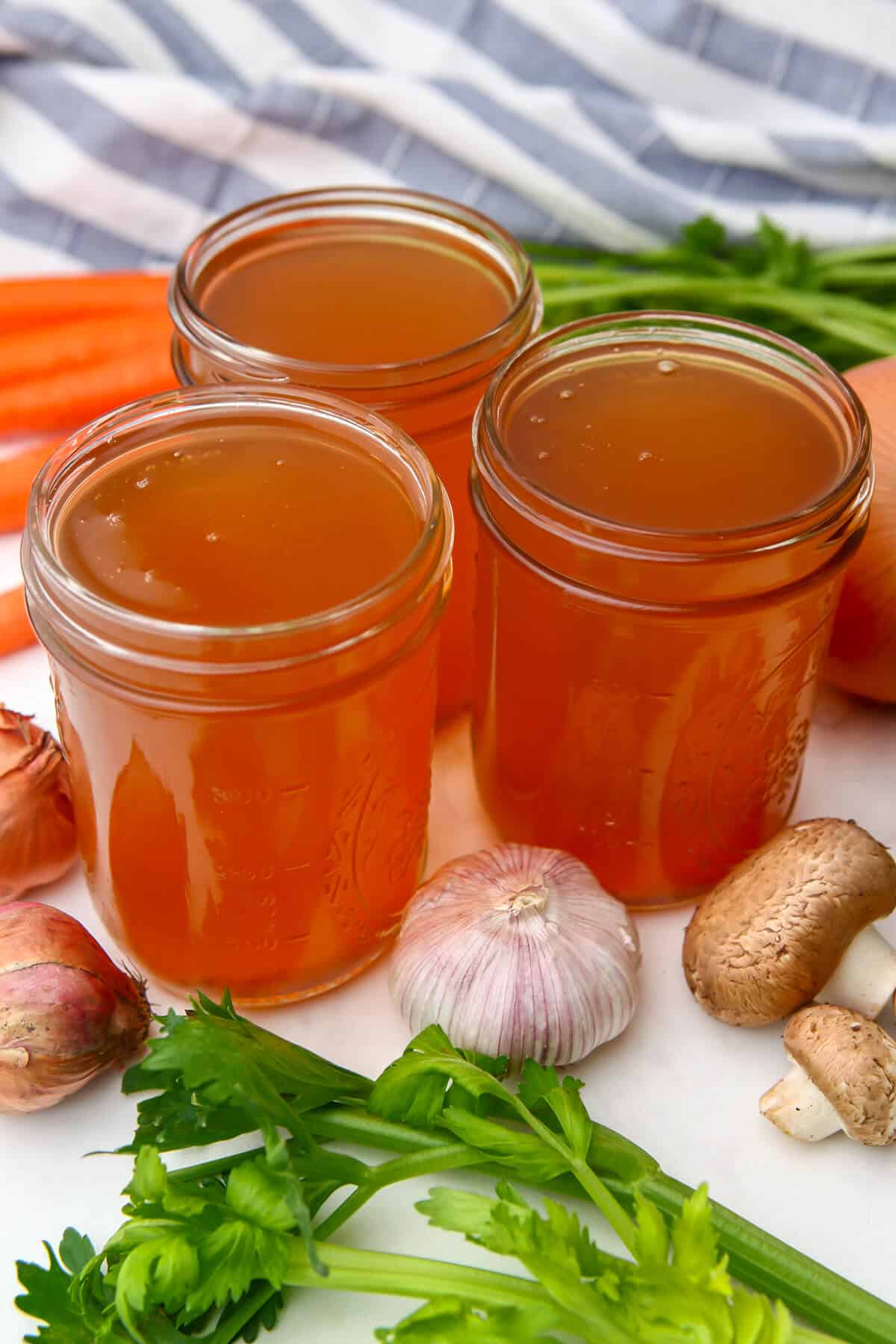
Jump to:
- ❤️ Why make this recipe
- 🧾 Ingredients and substitutions
- 🥦 What vegetables work best for broth?
- 🔪 Helpful tools
- 🥄 How to make vegetable broth
- 🥕 Can I use old vegetables?
- ➕Optional add-ins
- 🍲 How to use vegetable broth?
- 👩🏻🍳 Pro Tips
- ❓ Can I put boiled vegetable scraps in the compost?
- 🥡 Storing homemade broth
- ❄️ How to freeze vegetable broth
- 🌟 Ways to use your broth
- 📋 Vegetable broth recipe
❤️ Why make this recipe
If you hate throwing out the ends, stems, and stalks of vegetables this recipe is for you. I started saving peeling and scraps every time I chopped up veggies and stuck them in freezer bags until I had enough to fill a pot, then cooked it down into a broth.
The first time I made this veggie broth I was amazed at how good it tasted. I started collecting all my veggie scraps during the week and making a pot of broth on the weekends that I can use the following week to make soups, sauces, and gravies.
I just make it part of my routine now, and it's so simple, and best of all, it makes a delicious broth that tastes better than store-bought!
🧾 Ingredients and substitutions
- Vegetable Scraps - this includes the peels or ends of veggies that you cut off while prepping other meals. Almost any vegetable will work.
- Water - I like to use filtered water for the best flavor.
- Salt - you can omit this if you want or adjust the amount to suit your taste and dietary needs.
🥦 What vegetables work best for broth?
Most vegetables that you use frequently will work great for veggie broth. My mix usually contains onions, garlic, celery, carrots, broccoli stems, bell peppers, kale stems, potatoes, squash, cauliflower, cabbage, Brussel sprouts, mushrooms and/or zucchini.
🔪 Helpful tools
- A freezer bag to collect vegetable scraps.
- A large stock pot.
- Fine metal strainer - a regular colander will also work. You can also line a colander with cheesecloth if you want to strain out small pieces of veggies that would otherwise fit through.
🥄 How to make vegetable broth
Step 1 - As you are cooking with vegetables, collect any peels or stalks that you cut off and place them in a sealed freezer bag in the freezer.
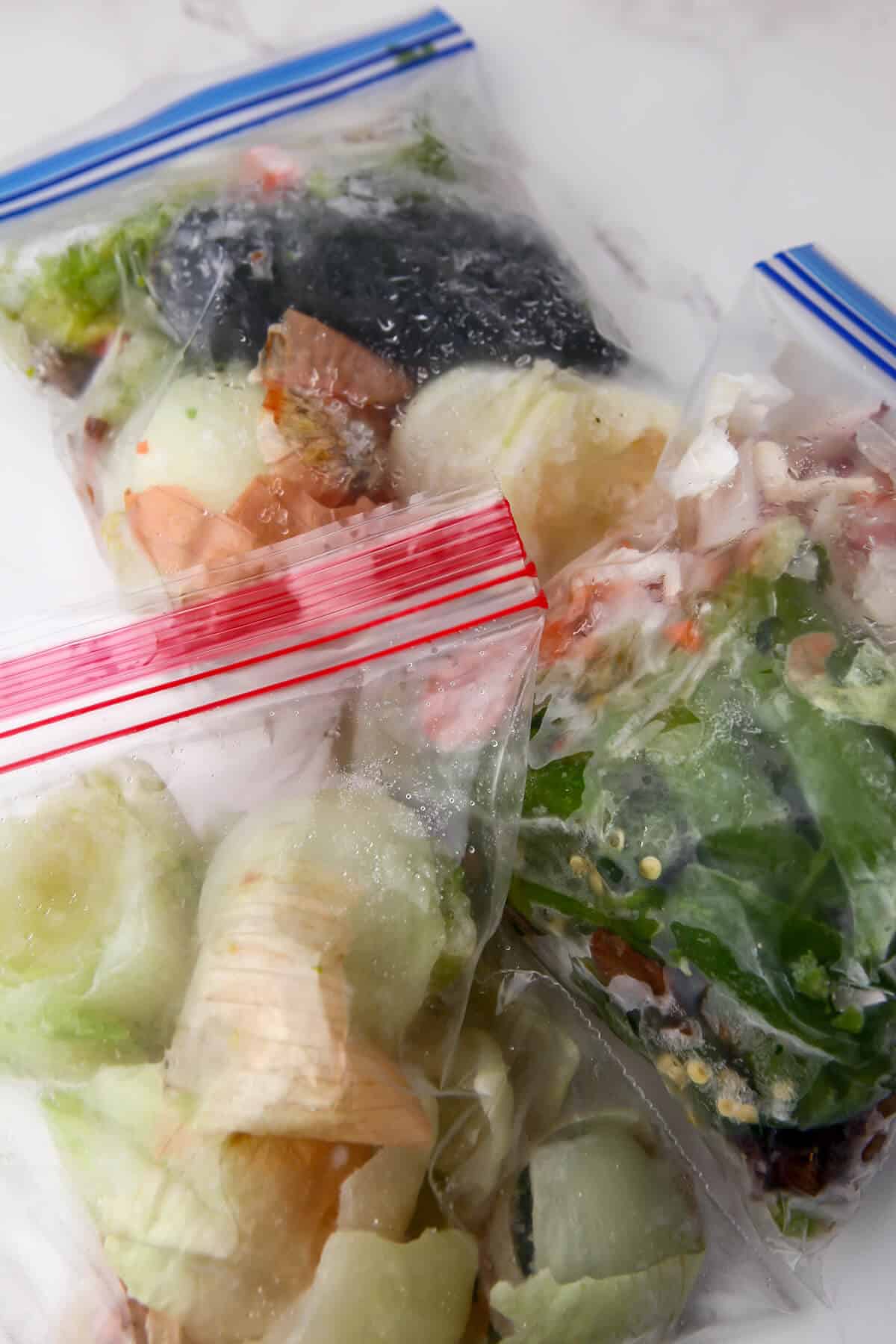
Step 2 - Once you have collected about 4-5 cups of vegetable scraps, pour the frozen scraps into a soup pot and cover it with 8 cups of filtered water and 2 teaspoons of salt.
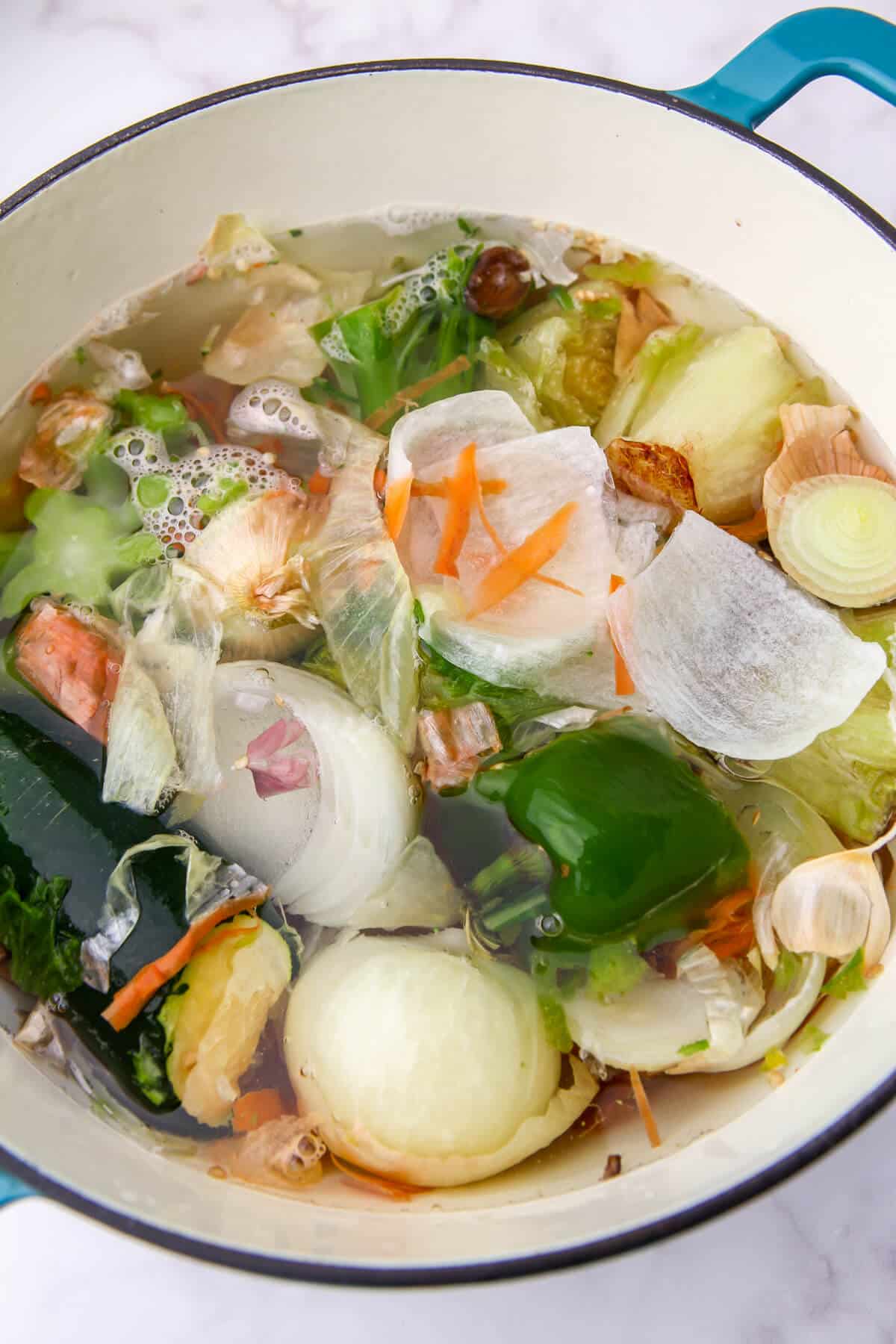
Step 3 - Turn the heat to medium-high and bring to it boil, then turn the heat to low and simmer uncovered for 1-2 hours. (The longer that you simmer, the more concentrated the flavor will be.)
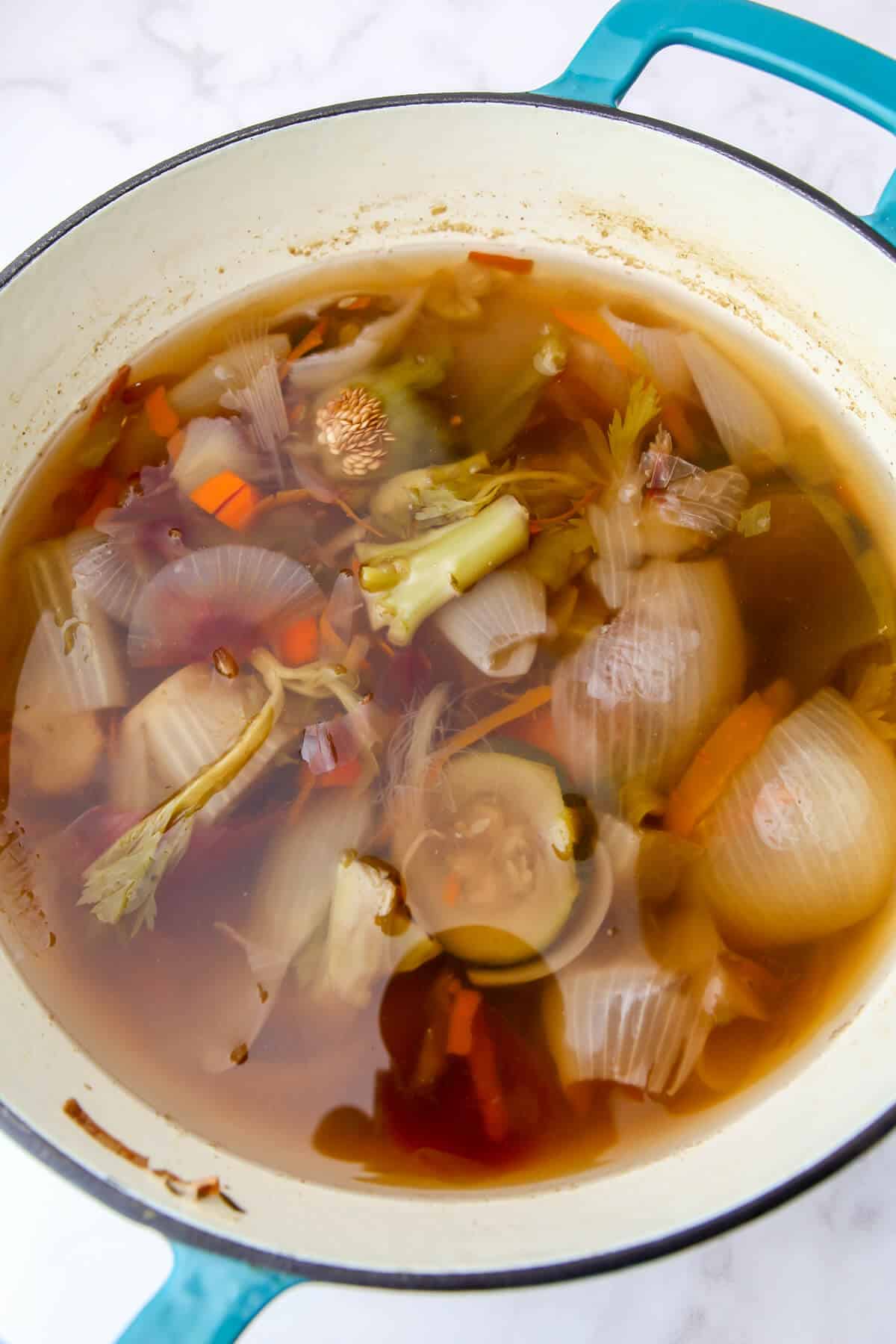
Step 4 - Place a strainer on top of another pot and slowly pour the broth through the strainer.
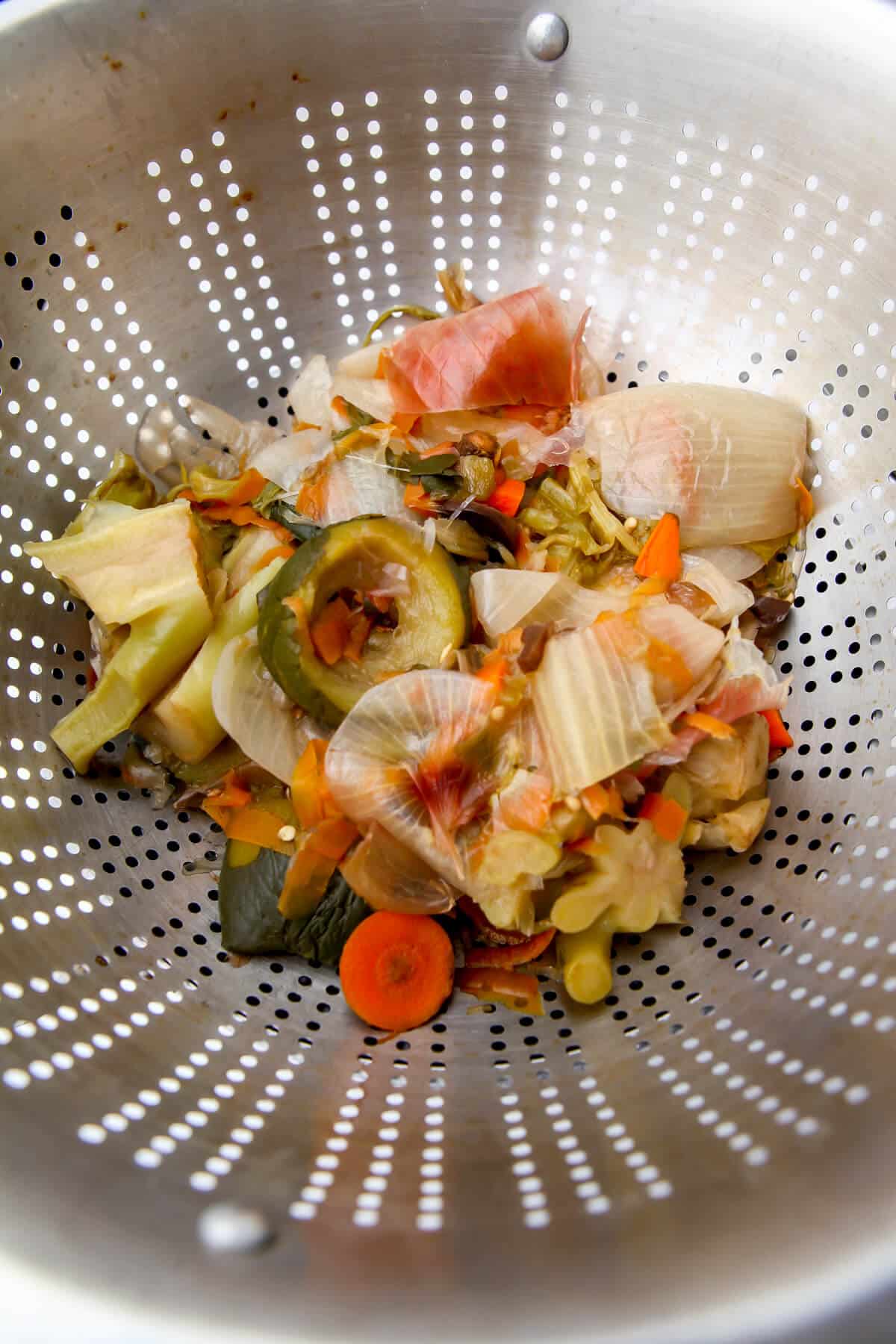
Step 5 - Allow the broth to cool a little, then store it in mason jars or Souper Cubes until you are ready to use it in recipes.
🥕 Can I use old vegetables?
Sure! Older vegetables like bell peppers that are starting to look wrinkled or carrots or celery that are limp and no longer crispy are great to use when making homemade stock. (I also love to use these up in my pureed zucchini soup recipe.)
➕Optional add-ins
You can also add some herbs and spices to flavor your broth. Sprinkle in some black pepper, basil, oregano, sage, thyme, parsley, rosemary, or a bay leaf while the broth is cooking for some extra flavor.
You can also add 1 tablespoon of nutritional yeast, soy sauce, or tomato paste to the broth at the end of cooking for more umami flavor.
A few dashes of turmeric will give your broth a beautiful golden color and add nutritional benefits too.
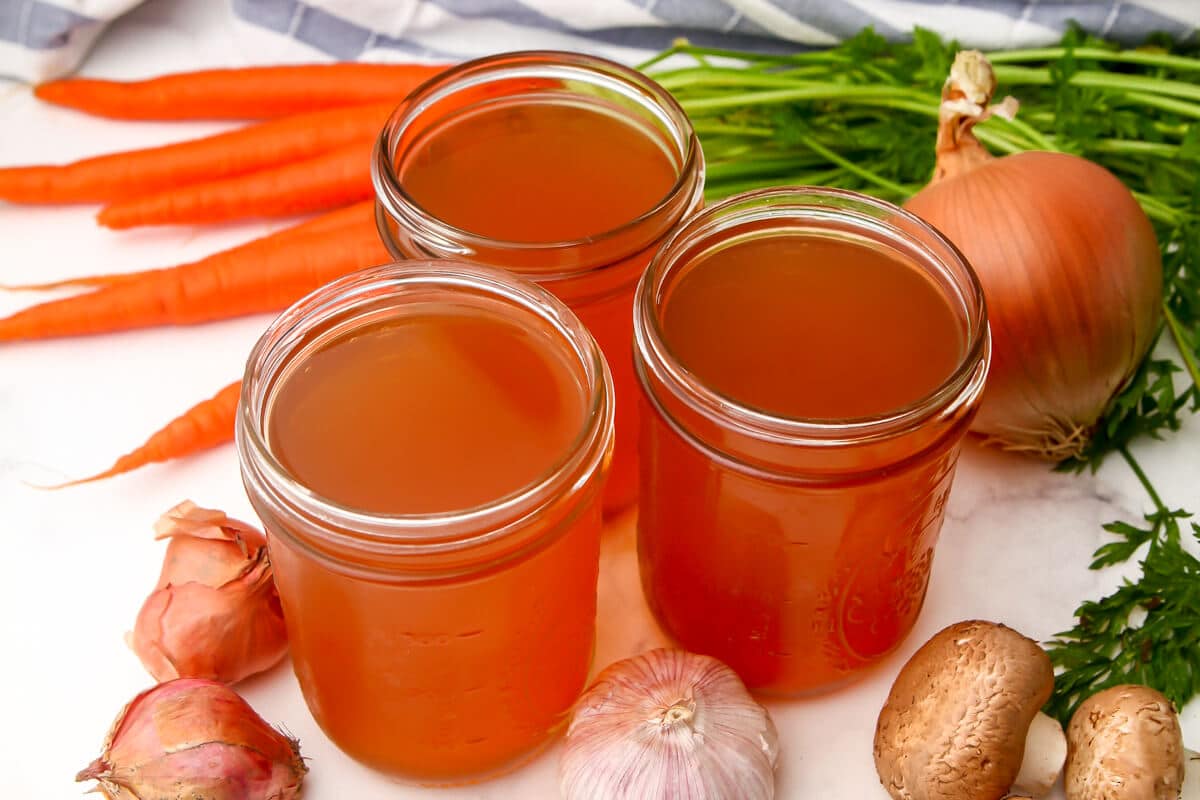
🍲 How to use vegetable broth?
Use this vegetable stock in any recipe that calls for broth. It works great to flavor vegan soups, added to vegan pasta sauces, vegan gravy, or in homemade seitan recipes.
This broth also tastes great on its own. I love to add a little oat milk or soy milk to it and drink it as a hot creamy beverage too.
👩🏻🍳 Pro Tips
- Don't use rotten vegetables that have a bad smell, they will also have a bad taste.
- Avoid peelings from non-organic vegetables if you are worried about chemicals or pesticides.
- Wash any dirt or soil off the ends of the stems.
❓ Can I put boiled vegetable scraps in the compost?
Yes, but if you compost your vegetables, simply leave the salt out of the broth until you have strained the vegetable scraps out of the broth. This way you won't be adding unwanted salt to your compost.
🥡 Storing homemade broth
I like to store my homemade broth in mason jars in the fridge so I have it on hand to use in a variety of recipes.
❄️ How to freeze vegetable broth
You can freeze vegetable broth in freezer-safe mason jars, or freezer bags, or I also love to use Souper Cubes for perfectly portioned amounts.
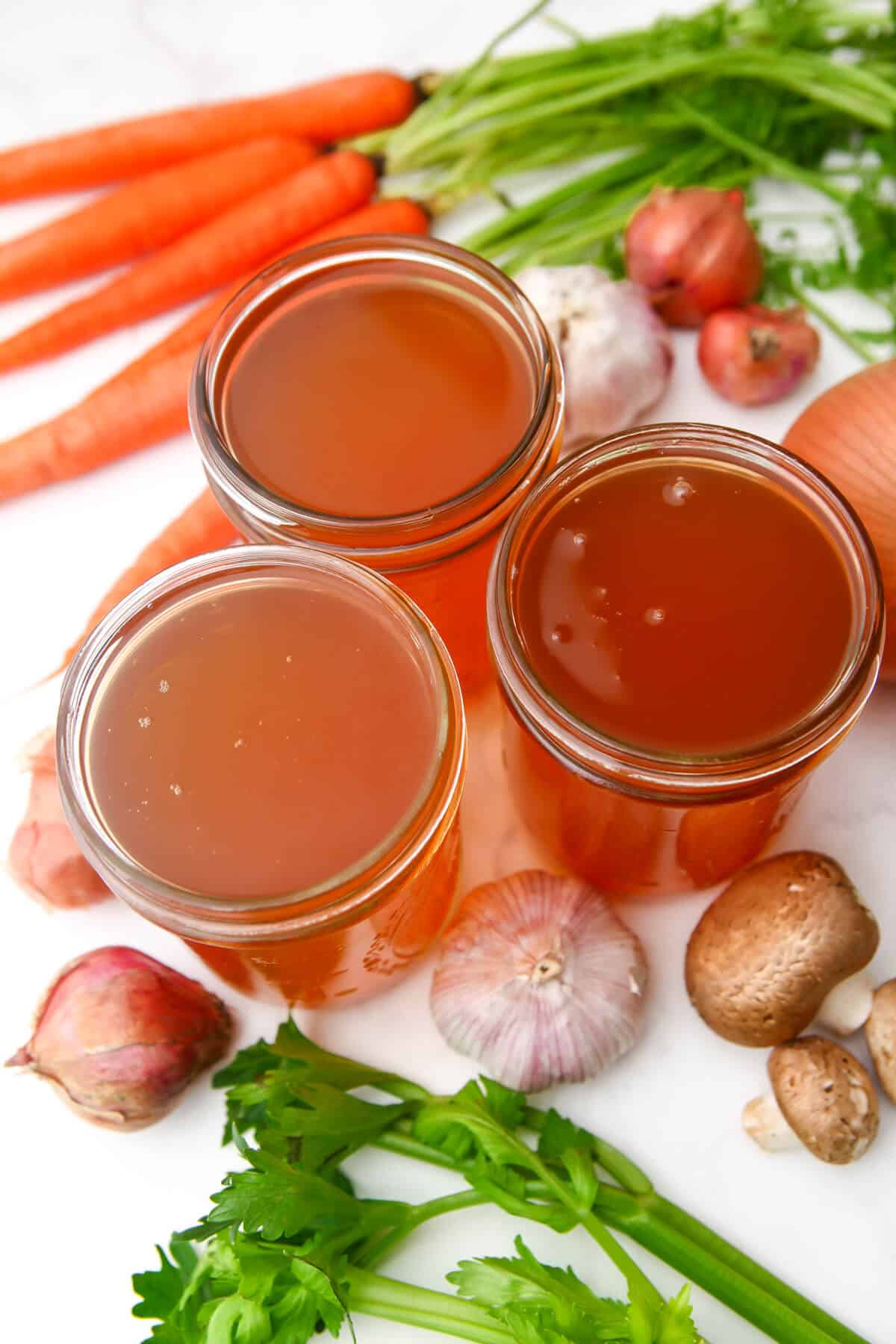
🌟 Ways to use your broth
- Vegan Minestrone
- Hippie Soup
- Dairy-Free Cream of Celery Soup
- Vegan Beef Stroganoff
- Vegan Orzo
- Easy Vegan Seitan
- Vegan Brown Gravy
- Vegan Shepheard's Pie
📌 Be sure to follow me on Pinterest for new vegan recipes!
📋 Vegetable broth recipe
Homemade Vegetable Broth
Equipment
- Dutch Oven or soup pot
Instructions
- As you are cooking with vegetables, collect any peels or stalks that you cut off and place them in a sealed freezer bag in the freezer.
- Once you have collected about 4-5 cups of vegetable scraps, pour the frozen scraps into a soup pot and cover it with 8 cups of filtered water and 2 teaspoons of salt.
- Turn the heat to medium-high and bring to it boil, then turn the heat to low and simmer uncovered for 1-2 hours. (The longer that you simmer, the more concentrated the flavor will be.)
- Place a strainer on top of another pot and slowly pour the broth through the strainer.
- Allow the broth to cool a little, then store it in mason jars or super cubes until you are ready to use it in recipes.
Notes
-
- Don't use rotten vegetables that have a bad smell, they will also have a bad taste.
- Avoid peelings from non-organic vegetables if you are worried about chemicals or pesticides.
- Wash any dirt or soil off the ends of the stems.
- Use 1 teaspoon of salt for a low-sodium vegetable broth.
Nutrition
⭐⭐⭐⭐⭐ Click the stars above or leave a comment! I'd love to hear from you!


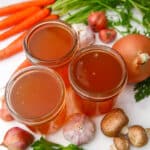
Monica! This is perfect! You even thoughtfully included instructions for composting afterward. It would not have occurred to me to leave out the salt till it was strained and separated. THANK YOU!! Starting this tomorrow. 😀
You're welcome! I hope that you like the broth as much as we do! 🙂